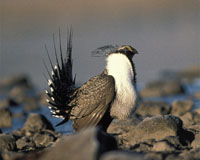| . |  |
. |
Tempe AZ (SPX) Dec 01, 2010 Geo-microbiologists from Arizona State University have solved a long-standing conundrum about how some photosynthetic microorganisms, endolithic cyanobacteria, bore their way into limestone, sand grains, mussel shells, coral skeletons and other substrates composed of carbonate. According to the lead investigator, ASU professor Ferran Garcia-Pichel, the answer to the mystery of what is "at the heart of an erosive force of global proportions" is a calcium-driven pump, similar to that which we use to power our muscles. The results of Garcia-Pichel's study "Microbial excavation of solid carbonates powered by P-type ATPase-mediate transcellular Ca 2+ transport" were published Nov. 29 in the Proceedings of the National Academy of Sciences (PNAS). While the dissolution of the carbonate coral reefs was noted more than a century ago by Louis Agassiz, the father of American naturalists, the specifics of how this physiological process occurs has remained a mystery. In fact, the process has presented a geochemical paradox to scientists, in that most cyanobacteria tend to precipitate new carbonates, not dissolve them. Typically cyanobacteria, by photosynthesizing, raise the pH of the water (and lower the acidity); this process typically causes carbonate to precipitate if the change is large enough. While that is the "normal" case, the paradox with boring cyanobacteria is that photosynthesis occurs at the same time that they dissolve carbonate structures (which typically requires the pH to go down, making the environment more, rather than less acidic). Garcia-Pichel and coauthors, Edgardo Ramirez-Reinat, a doctoral candidate, and Qunjie Gao, a faculty research associate, in the School of Life Sciences in ASU's College of Liberal Arts and Sciences, set about trying to understand how this select group of carbonate-boring species can excavate by coaxing a strain of Mastigocoleus testarum, a filamentous, branching cyanobacterium, to grow in the laboratory under controlled conditions. Using real-time microscopic examinations, including calcium imaging and photosynthetic analysis, coupled with molecular genetics, the trio examined the cyanobacteria's invasion of calcite chips and the physiological mechanisms at play. The ASU group found supersaturation of calcium near the surface of the borehole, but undersaturation at the boring front. This finding meant that the mass transfer of calcium could not happen extracellularly, by diffusion in the bored hole, which would require calcium to move against a concentration gradient. Instead, they discovered that the endolithic cyanobacteria took up calcium from the tips of their boring filaments, directly into their cells. This action promoted the localized dissolution of the calcium-containing carbonate substrate. The calcium was then transported from cell to cell away from the area being quarried, and finally excreted at the entrance of a borehole. The consequences of this transient, but significantly high, concentration of intracellular calcium in the cells remains a question that the Garcia-Pichel laboratory hopes to pursue. Garcia-Pichel says that he hopes that the newly gained knowledge allows the scientists to explain a variety of geological phenomena and points to new research directions to combat microbial pests of shellfish, such as cultured mussels. "While it is hard to quantify the losses to the shellfish industry, the impact of endolithic bacteria has been described as a plague by Canadian fisheries," says Garcia-Pichel. "We have identified compounds that abolish the boring activity by inhibiting the enzymatic calcium pumps involved in the process, which may be implemented eventually to protect targets, either by direct application or through genetic engineering of the mussels." Such studies as these will also help researchers to understand the impact of changes in calcium saturation states of ocean waters, says Garcia-Pichel, which are driven by increased atmospheric carbon dioxide. These are expected to result in a global enhancement of bioerosion, including the already impacted coral reefs. Ferran Garcia-Pichel and his colleagues' laboratory studies will now also translate to their field research, where they will try and quantify the effect of ocean acidification on cyanobacterial borings. They will also pursue studies of other endolithic cyanobacteria, and other minerals, such as dolomites, calcophosphates and magnesites.
Share This Article With Planet Earth
Related Links Arizona State University Darwin Today At TerraDaily.com
 Sage-Grouse Western Habitat Map Completed
Sage-Grouse Western Habitat Map CompletedWashington DC (SPX) Nov 29, 2010 Secretary of the Interior Ken Salazar has announced the completion of a breeding bird density map for the greater sage-grouse by the Bureau of Land Management in coordination with the Western Association of Fish and Wildlife Agencies, the U.S. Fish and Wildlife Service, and the Natural Resources Conservation Service. The map identifies important range-wide focal areas having high density o ... read more |
|
| The content herein, unless otherwise known to be public domain, are Copyright 1995-2010 - SpaceDaily. AFP and UPI Wire Stories are copyright Agence France-Presse and United Press International. ESA Portal Reports are copyright European Space Agency. All NASA sourced material is public domain. Additional copyrights may apply in whole or part to other bona fide parties. Advertising does not imply endorsement,agreement or approval of any opinions, statements or information provided by SpaceDaily on any Web page published or hosted by SpaceDaily. Privacy Statement |